The concept of a unicorn has re-entered modern conversation, but instead of referring to an animal with a single horn (uni-corn), it now means ‘a person or thing that is rare or highly valued’ or ‘a privately-owned startup company worth more than $1 billion’. We’re going to discuss the animal, since we already know that every composer is a unicorn, right?
Leo Brouwer: The Book of Imaginary Beings
Cuban composer Leo Brouwer’s El libro de los seres imaginarios (Book of Imaginary Beings) takes its inspiration from Jorge Luis Borges’ book of the same name. Brouwer takes Old World myths and presents them with the sounds from the New World, the guitar duo. In Borges’ chapter on The Unicorn, he gives its history, starting with the Greek writer Cresias 400 years BC – this unicorn, which lived in India, was like a wild donkey but brightly coloured, with a white coat, a purple head, blue eyes and a single horn in the middle of its forehead, with a white base, a red tip, and a black middle section. Pliny describes it as being the fiercest animal, which ‘resembles a horse, but in the head a stage, in the feet an elephant, and in the tail a boar, and has a deep bellow, and a single black horn three feet long…’. By the Middle Ages, this animal, which Pliny had said was impossible to capture alive, could now be captured by virgins as it seeks to put its head in her lap.
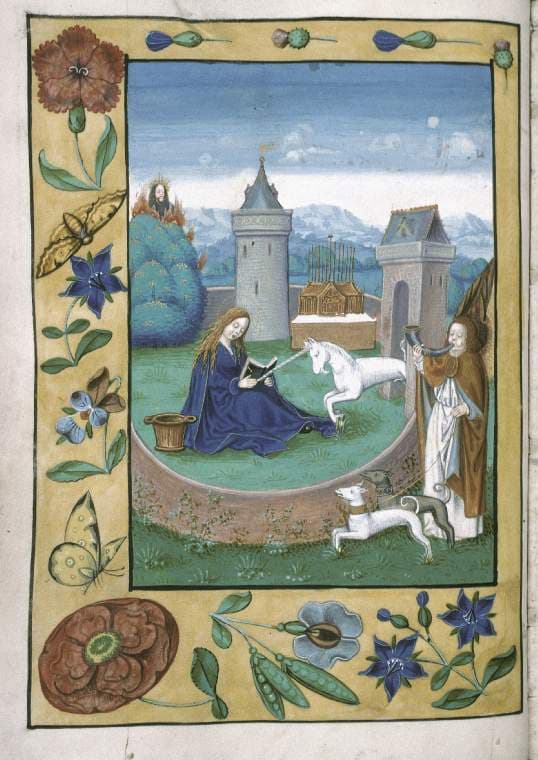
The Virgin Mary reads next to a unicorn (Fitzwilliam Museum, Grote Greet Book of Hours, MS McClean 99 11v )
Leo Brouwer: El libro de los seres imaginarios (The Book of Imaginary Beings) – I. El unicornio (The Unicorn) (Newman and Oltman Guitar Duo)
Alec Roth: The Unicorn in the Garden
English composer Alec Roth has put his unicorn in the garden, again, in the voice of the guitar. Written for the guitarist Morgan Szymanski, the work uses harmonics to portray the mysterious and mythical world of the unicorn.
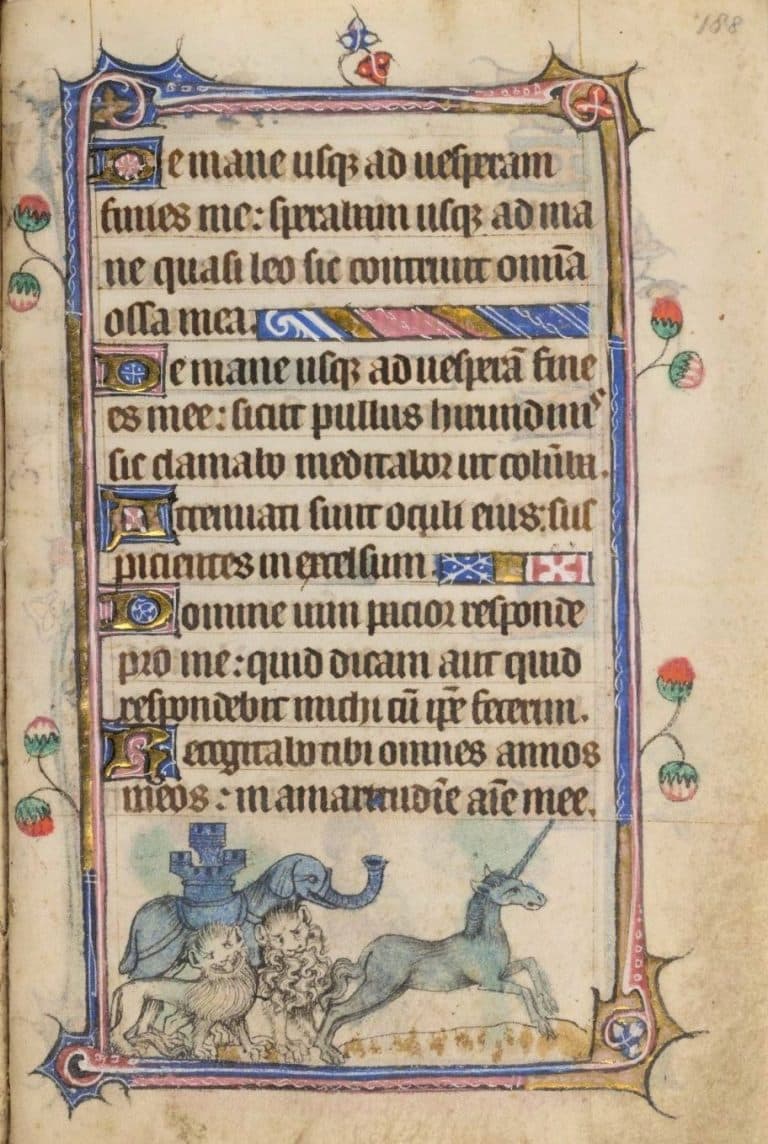
Illustration of a unicorn and an elephant, (British Library Taymouth Hours, Yates Thompson 13, f.188)
Alec Roth: The Unicorn in the Garden (Morgan Szymanski, guitar)
Thibaut de Champagne: Ausi com l’unicorne sui
Soprano Anne Azema goes back to the medieval French chansonniers to find her song about unicorns. Written by the 13th-century trouvère, Thibaut de Champagne, ‘Aussi come unicorne sui’ is a tale of unrequited love: ‘I am like the unicorn, in ecstasy before you’…only to be wounded to death…unless, of course, she takes pity on him.
Thibaut de Champagne: Ausi com l’unicorne sui (Paul Hillier, bass; Andrew Lawrence-King, harp)
R. Murray Schafer: A Medieval Bestiary
Canadian composer R. Murray Schafer takes up a different bestiary, this one by T.H. White. White translated a 12-century Latin book to create The Bestiary: A Book of Beasts. White’s ‘Monoceros’ has a gleaming white horn 4 feet long – and he notes that although it is possible to kill them, it is not possible to capture them. His ‘Unicornis’ is the regular medieval description, requiring the application of one virgin to capture the same. He also notes that the Greeks called this animal the Rhinoceros and concludes by saying ‘The Unicorn often fights with elephants and conquers them by wounding them in the belly’.
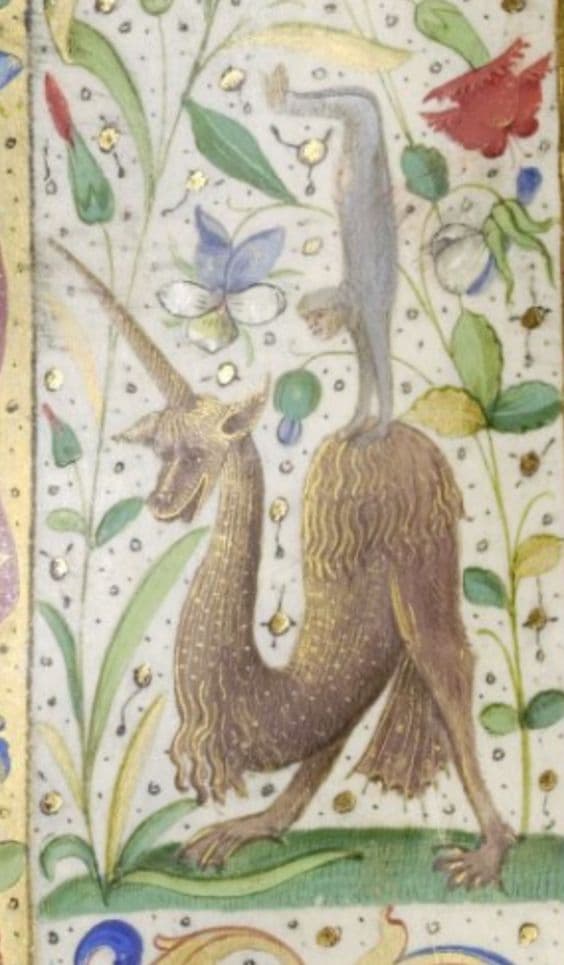
Missale Sancti Stephani Divionensis, dit Missel de Richard Chambellan, 1485-1490 (Bibliothèque national)
R. Murray Schafer: A Medieval Bestiary – No. 6. The Unicorn (Gary Poster, bass-baritone; Carolina Chamber Chorale; Timothy Koch, cond.)
Donald Sur: The Unicorn and the Lady
Donald Sur’s The Unicorn and the Lady takes its inspiration from The Hunt of the Unicorn tapestries in The New York Metropolitan Museum’s Cloisters Museum. This set of seven tapestries created between 1495 and 1505 were designed in France and woven in The Netherlands.
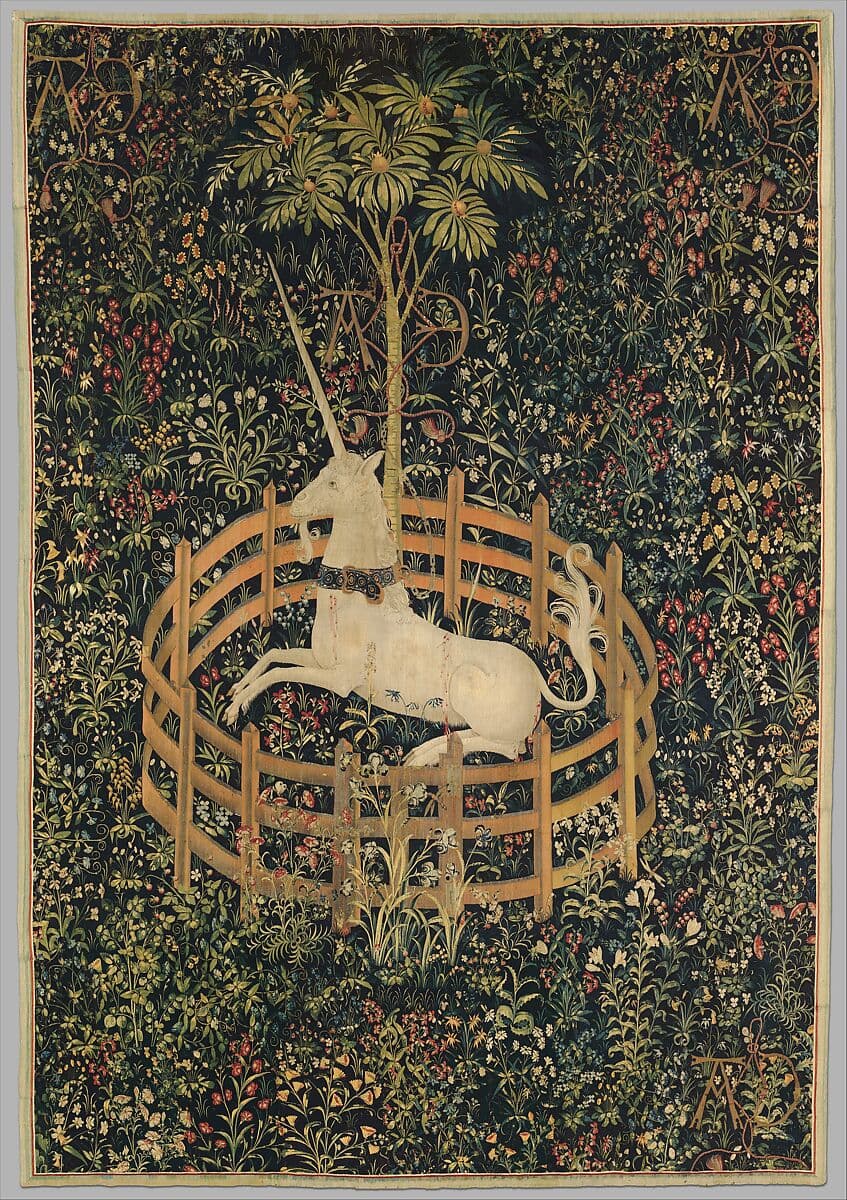
The Unicorn Rests in the Garden, 1495–1505 (Met Museum, The Cloisters)
Sur’s piece is narrated in 12-part text by American poet Barry Spacks, with different combinations of instruments for each section. 18th-century hunting calls are also part of the soundscape.
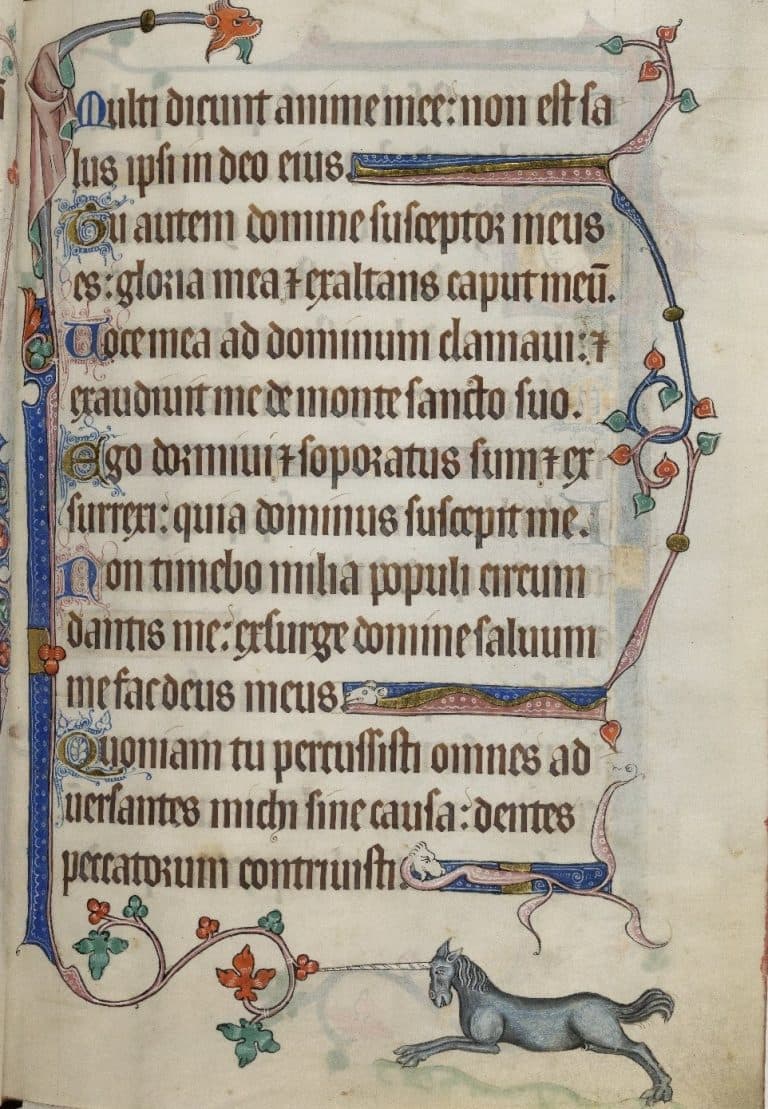
A unicorn charges at the bottom of the Luttrell Psalter (British Library Add. 42130, f.15.)
Donald Sur: The Unicorn and the Lady (Jim Petosa, narrator; Collage New Music; David Hoose, cond.)
George Kontogiorgos: String Quartet No. 1, “Unicorn”
George Kontogiorgos, on the other hand, uses his memories of Paris and of walking through the woods of Boulogne as his starting inspiration.
George Kontogiorgos: String Quartet No. 1, “Unicorn” – I. Adagio
Einojuhani Rautavaara: True and False Unicorn
Einojuhani Rautavaara’s True and False Unicorn takes its starting point from a poetry collection by James Broughton. Its first appearance was in 1970, for a commission for a piece for chamber choir, instruments, and electronic music; the work was revised in 1974 for the Prix Italia. The need to create a work for radio meant a complete re-write. It was revised again in 2001–2002.
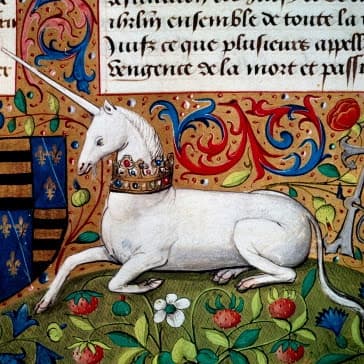
Unicorn in illuminated manuscript, c.1450, France
Einojuhani Rautavaara: True and False Unicorn – I. Before the Arras: The Unicorn questions the nature of the chase (Finnish Radio Chamber Choir; Finnish Radio Symphony Orchestra; Timo Nuoranne, cond.)
J. Mark Scearce: Enchanted Forest Suite
J. Mark Scearce’s Enchanted Forest Suite takes a unicorn to a new place: into flight. In this work for brass quintet, the heroic unicorn rises and then flies over a driving ostinato and moving melodic lines.
J. Mark Scearce: Enchanted Forest Suite – I. Flight of the Unicorn (Berlin Brass Quintet)

Unicorn fish
Daniel Walker: The Unicorn
Daniel Walker’s The Unicorn sets the story from the point of view of the other half of most unicorn stories – the woman: sleep-walking in the forest, she sees a pair of silver unicorns – she withdraws and they will depart, unaware of her.
Daniel Walker: The Unicorn (Helena Rathbone, Aiko Goto, violins; Nicole Forsyth, viola; Daniel Yeadon, cello; Maxime Bibeau, double bass; Sally Whitwell, piano; Gondwana Voices; Mark O’Leary, cond.)
Dan Dediu: A Mythological Bestiary, Op. 133
Dan Dediu sets another bestiary, but now for violin and piano. The Unicorn emphasizes purity and a nostalgic nobility.
Dan Dediu: A Mythological Bestiary, Op. 133 – II. Unicorn (Irina Muresanu, violin; Valentina Sandu-Dediu, piano)
The unicorn was always an illusion, created out of stories of rhinoceroses and from finding narwhal horns washed up on the shore. But, it was one of the only fierce animals that could be captured by a maiden, which empowered both woman and beast.
For more of the best in classical music, sign up for our E-Newsletter

